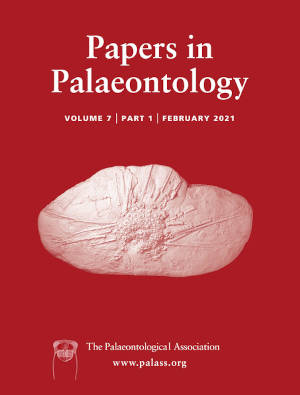Reg. Charity No. 1168330

Archaeotrogons have long been known from late Eocene and Oligocene localities in France, where limb bones are abundantly represented. The phylogenetic affinities of these birds, however, have remained elusive. Although archaeotrogons are now considered to be representatives of the Strisores, the clade including ‘caprimulgiform’ and apodiform birds, their exact position in this clade is unresolved. Here, a partial skeleton of a new species of the Archaeotrogonidae is described from the early Eocene London Clay of Walton-on-the-Naze (Essex, UK). In addition, a new specimen of the archaeotrogon Hassiavis from the latest early or earliest middle Eocene of the Messel fossil site in Germany is reported, which is the best preserved skeleton of this species. Archaeodromus anglicus gen. et sp. nov. from the London Clay is the earliest archaeotrogon known to date, and the holotype shows previously unknown skeletal characteristics of archaeotrogons that bear on the phylogenetic affinities of these birds. The quadrate in particular exhibits a distinctive morphology and shows derived morphological characteristics of the Strisores. Although the primary analysis did not conclusively resolve the affinities of archaeotrogons, analyses constrained to a molecular scaffold resulted in a sister group relationship to the Caprimulgidae (nightjars). The evolutionary history of this most species-rich group of nocturnal Strisores is virtually unknown, and recognition of archaeotrogons as archaic stem group representatives of the Caprimulgidae would fill a striking gap in the fossil record.
AcknowledgementsI thank Jason Bergdahl for facilitating the acquisition of the collection of his father, the late Paul Bergdahl. Anika Vogel (SMF) is thanked for access to the Messel fossil and Bruno Behr (SMF) for its excellent preparation. The photos were taken by Sven Tränkner (SMF). Michael Daniels is acknowledged for access to his private collection of London Clay birds during earlier visits. Cécile Mourer-Chauviré is thanked for access to Archaeotrogon fossils and for permission to reproduce a photo of the humerus of Archaeotrogon hoffstetteri. Comments from Ursula Göhlich, two anonymous reviewers, and the Technical Editor Sally Thomas improved the manuscript. Open Access funding enabled and organized by Projekt DEAL.